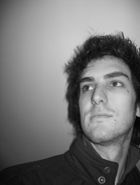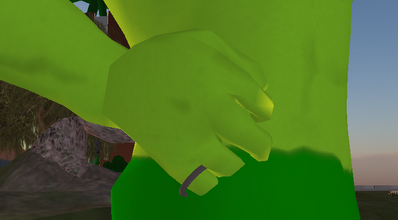A researcher at the University of California in San Diego is seeking participants for a large-scale study of avatar movement in Second Life and OpenSim.
The study involves both online questionnaires and in-world movement tracking.

The researcher, Jean-François Lucas, is a graduate student at the Department of Anthropology and Sociology at the European University of Brittany in Rennes, France and also a visiting graduate at UC San Diego’s Center for Research in Computing and the Arts.
The first part of the research project is an survey, which virtual world users can complete online. Lucas said it should take about a minute to fill out the questionnaire, which is completely anonymous, and designed to collect data about how people act in virtual environments.
The second part is more involved, and requires that participants wear a “magic ring” that tracks their movements. More details about this part of the research project are here.
“With this object, the avatar sends data about its position in the virtual world and about what it’s doing — walking, sitting, busy, and so on,” Lucas said. “But the goal is not to track avatars. The goal is to compare trajectories of avatars and try to understand the relations with the spacial layouts of digital cities.”

It’s a massively ambitious undertaking. The research project only began a few days ago, but Lucas said he’s already collected “several hundred thousand” data points.
Lucas — also known as “Gehan Kamachi” in Second Life — will use the research as part of a paper about digital cities and virtual worlds, and what it means when people say that they live in a particular virtual location.
“We say all the time that people ‘live’ in digital spaces but we define this concept seldom for a virtual world,” Lucas told Hypergrid Business.
The topic was first addressed by Edward Catronova in his book, Synthetic Worlds: The Business and Culture of Online Games,
for which he surveyed Everquest players.
“He sought to determine how a user could feel immersed in the game,” Lucas said. “Castronova didn’t really speak about ‘habitat’ but he made connections between time, immersion and the concept of habitat. Spending time, leveling up, exploring, living in a digital space — these are all distinct concepts, and each concept has specific qualities that we need to understand and qualify.â€
Lucas said that he is particularly interested in open-ended virtual worlds which don’t have an explicit story or goals for users to achieve, and those affiliated with real-world locations. That includes content creation-oriented virtual worlds like Second Life and mirror worlds like Twinity. Google Earth is not a virtual world, he added, as much as a socio-technical application.
Privacy and security
All data is stored in a private, password-protected servers at UC San Diego and will not be shared with anyone.
“This survey is purely scientific and has no direct commercial purpose,” Lucas said. ” The raw data will be not sold thereafter.”
However, other researchers, and commercial companies, can get the final results of the research and benefit from them, he added. In either case, no personally identifiable information or avatar names would ever be released, he said. More details about the privacy of the results are here.
“Each avatar can detach the ring at any time,” Lucas added. “However, to obtain quantitative and qualitative results, we encourage you to wear this item as long as you can — all the time, if possible.”
- Classic metaverse books on sale now at Amazon - May 16, 2024
- All OpenSim stats drop on grid outages - May 15, 2024
- 3rd Rock Grid residents find new homes on ZetaWorlds - May 14, 2024
